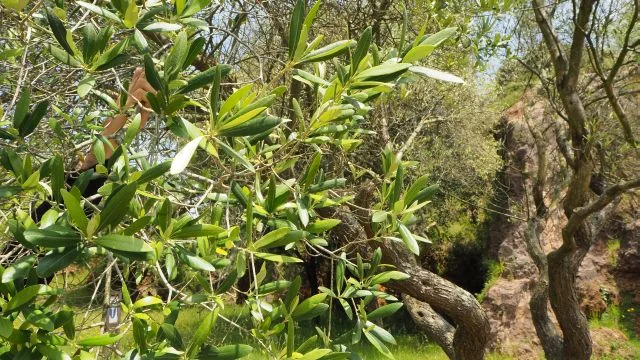It is a wild species that has been exploited since time immemorial for the properties of its fruits, olives. It seems that its cultivation was introduced to the Peninsula by the Phoenicians, and over time, different varieties have been selected that have lost the thorns from their branches and improved the fruit, as wild olives (acebuchinas) are smaller and have less flesh.
Curiosities
In Spain, there are more than 300,000,000 olive trees; due to this abundance on the peninsula, it is the second largest allergen after grasses.
The branch is considered a symbol of peace.
| Height | Does not exceed 8-10 meters. |
| Leaves | Persistent, opposite, and lanceolate in shape. With an entire margin, pointed. Dark green on the upper side and silvery on the underside. |
| Flowers/Fruit | Its fruits are edible and oil is extracted from them. The flowers appear in spring and are very small with 4 whitish petals. |
| Climate/Habitat | It accompanies holm oaks, gall oaks, and cork oaks. When cultivated, it occupies large areas. |
| Common Name | Olive |
| Scientific Name | Olea Europea |
| Genus | Olea |
| Family | Oleaceae |




















